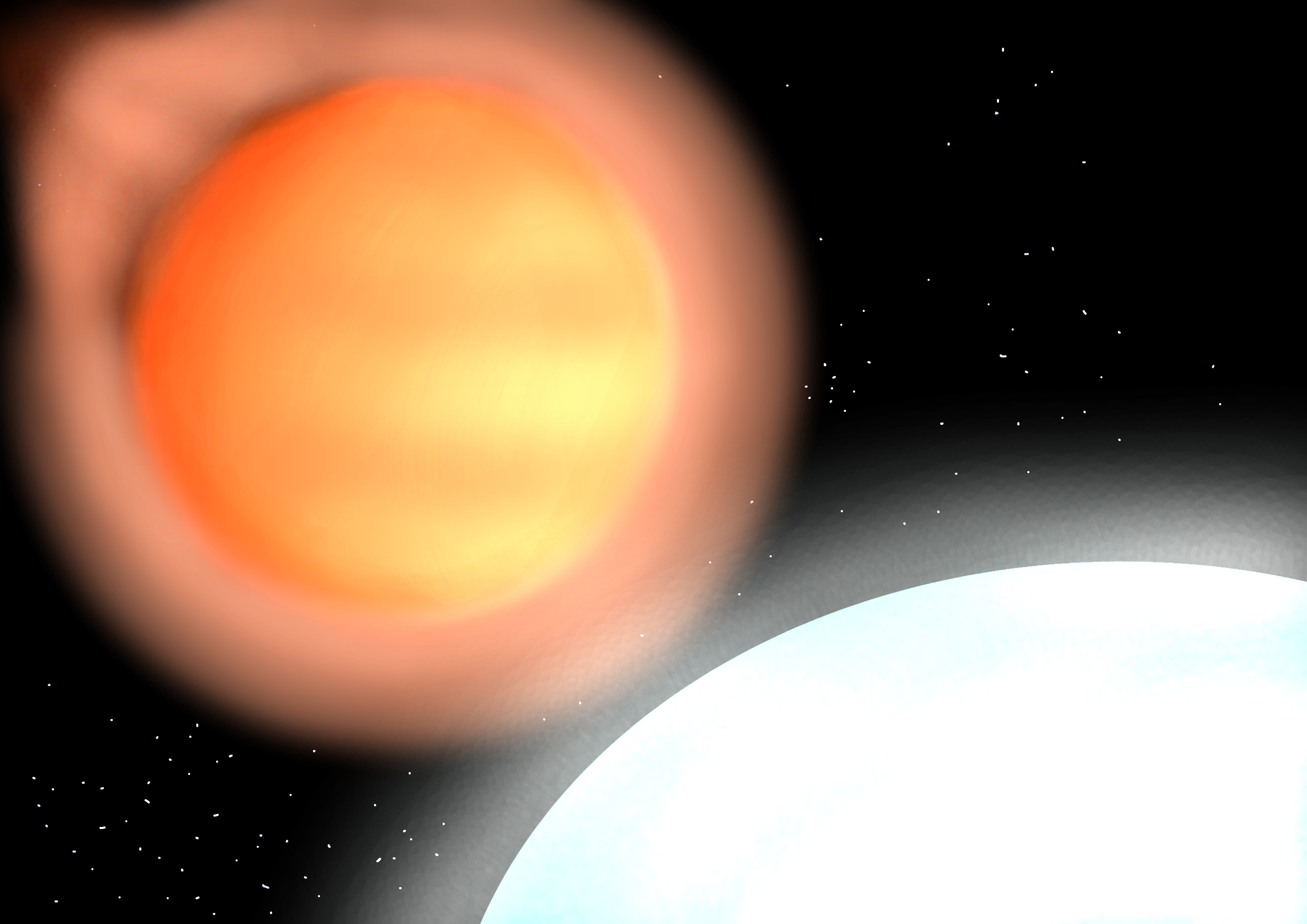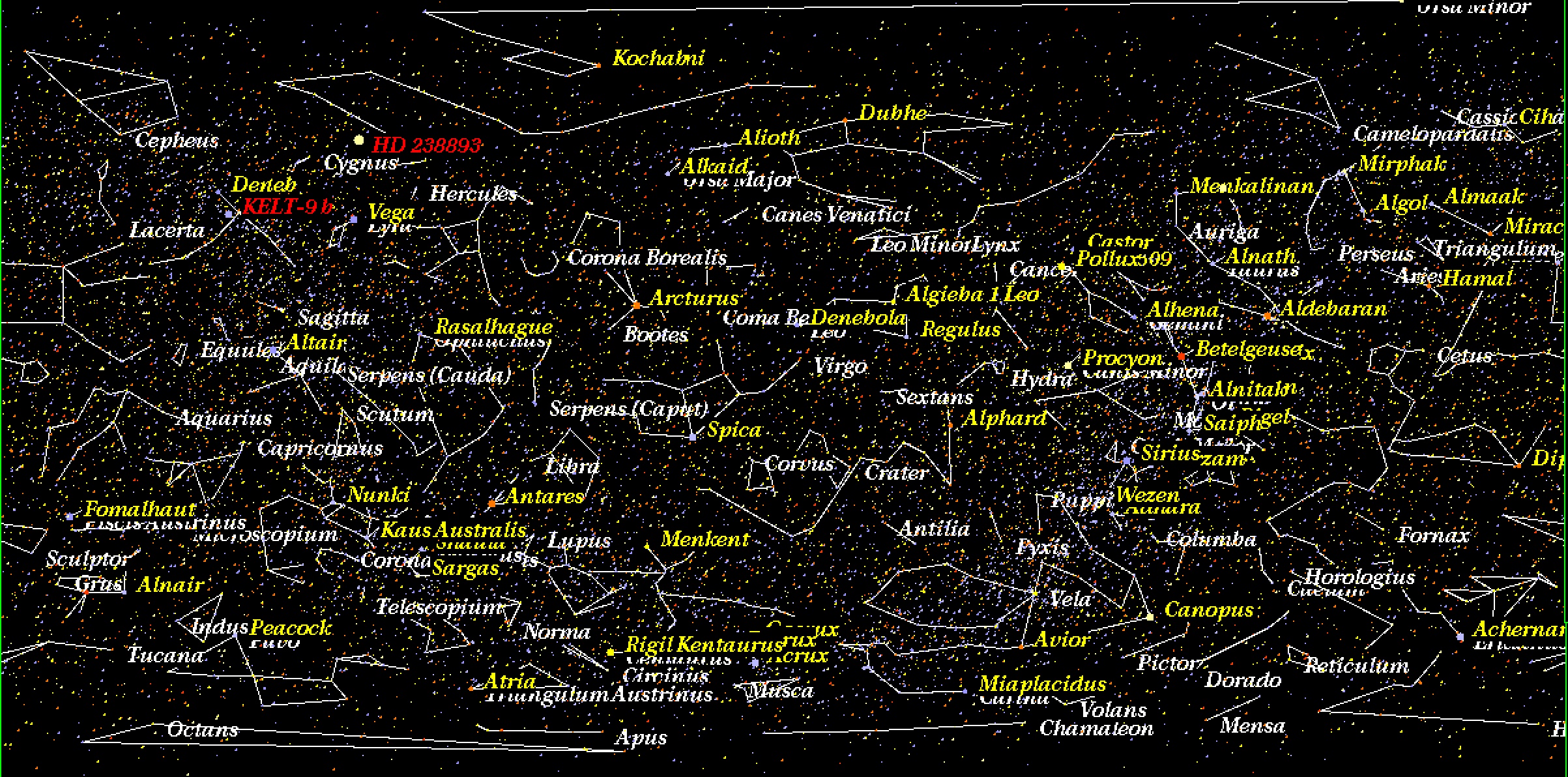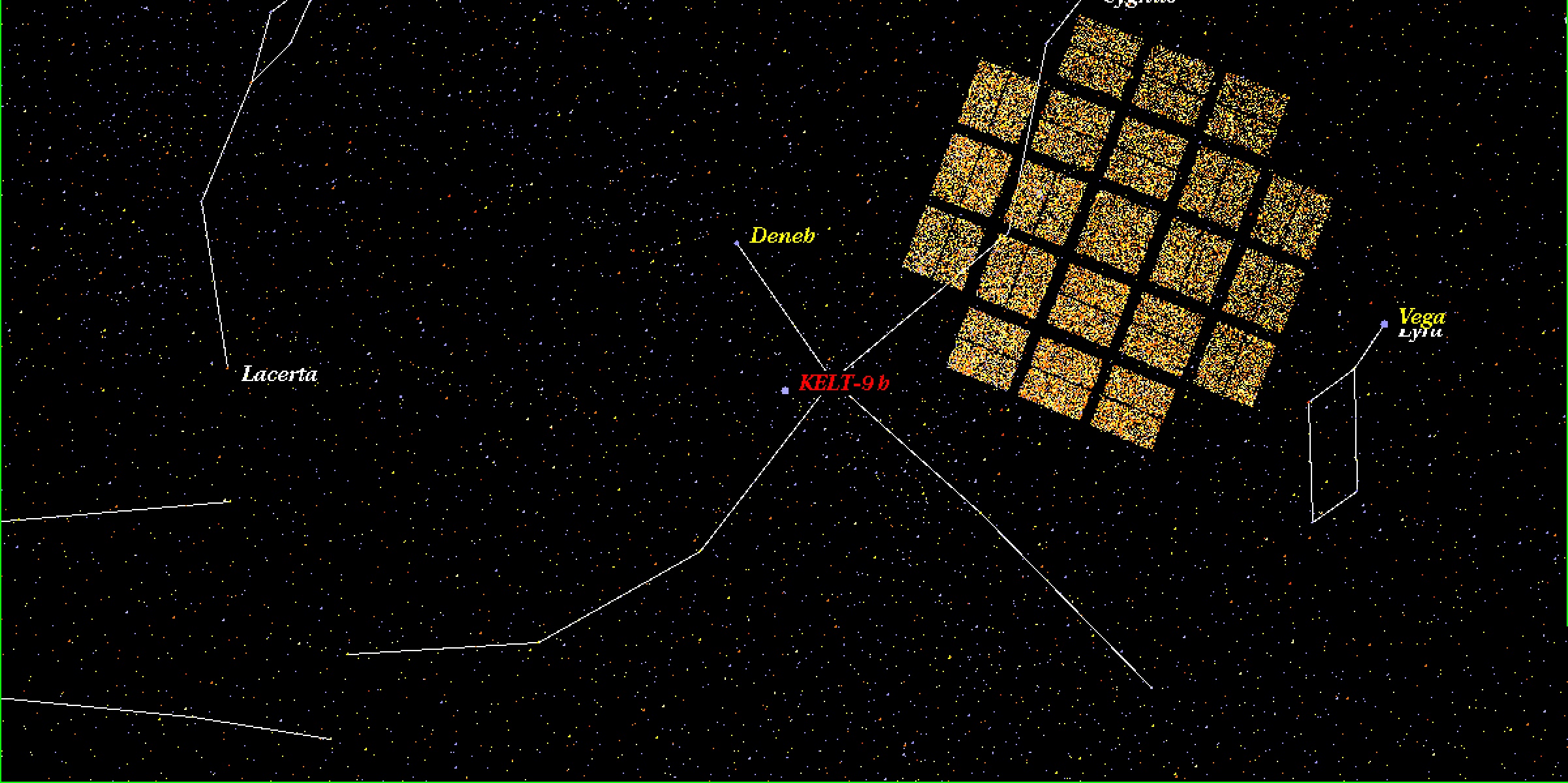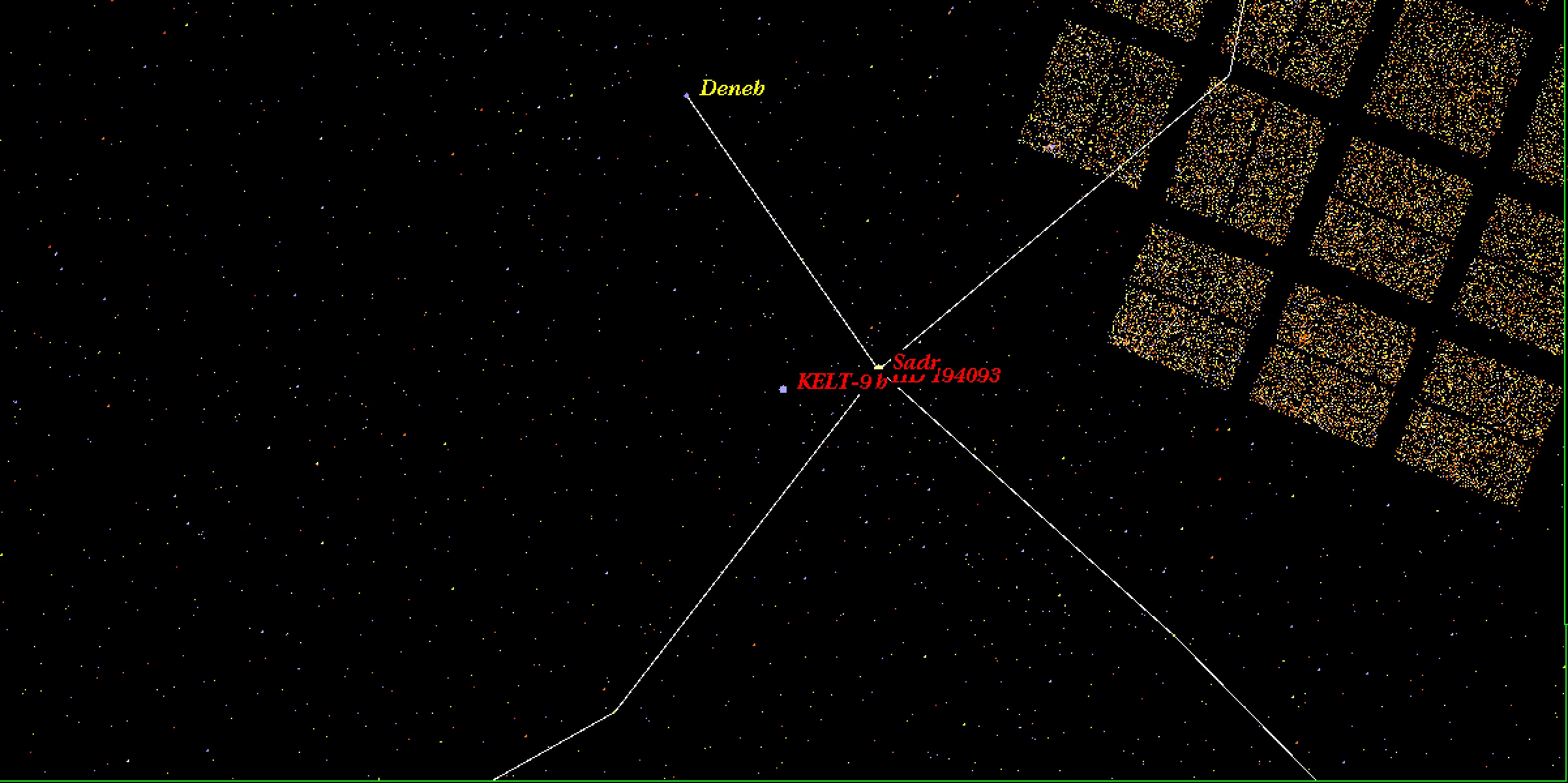
(Imaginary Picture of KELT-9 b and its host star KELT-9 (HD195689), credit: Miu Shimizu, Habitable Research Unit – SGH Moriyama High School)
(KELT-9 b と主星KELT-9 (HD195689) の想像図 守山高校ハビタブル研究会 清水海羽 画)
惑星と聞けばまずは、我々の住む地球のような環境、もしくは火星や木星など、太陽系の仲間たちを想像します。実際に、発見が話題になる系外惑星は、地球に似ているものや、水の存在が期待されるものが多いように感じます。それはもちろん、地球に似た環境ならば生命の存在が期待されるからですが、系外惑星の中には、我々の知る惑星環境とはかけ離れているからこそ面白いものもたくさんあります。
KELT-9 bは、恒星に匹敵するほど熱い惑星として話題になりました。はくちょう座の方向、650光年先のA型星 KELT-9 の周りを周期1.48日で公転しており、質量と半径はそれぞれ木星の2.9倍と1.9倍ほどの、巨大ガス惑星です。約1万度という主星の表面温度の高さ(太陽でも約6千度)と、そこから0.03 au しか離れていない公転軌道の近さ(水星軌道の10分の1以下)ゆえ、この惑星の表面はかなりの高温になっていることが予想されます。
実際に、惑星が主星の後ろ側に隠れる場面を観測した結果、この惑星の昼側は4600 Kという、惑星のイメージを覆すほどの高温環境であることがわかりました。我々の太陽系を含む天の川銀河にある恒星の7割以上を占めると言われるM型星でも、その表面温度は4000度に達しません。つまり、KELT-9 b は惑星でありながら、多くの恒星よりも熱い大気を持っていることになります。この温度になると、水や酸素、二酸化炭素など、惑星の大気には馴染み深い “分子” が存在できないため、この惑星の大気は原子が主成分になっていると考えられます。これまで常識だった「分子を主成分とする惑星大気」とはまったく違う、しかし内側に熱源を持つ恒星の大気とも異なる、全く新しい未知の大気です。
さらに、主星の極端紫外線(波長が91.2nm未満の非常に高エネルギーの電磁波)の放射が非常に強く、ただでさえ高温のために膨らんだ惑星大気を吹き飛ばし続けていると予想されます。その量は低く見積もっても1秒間に1万トン以上という勢いで、吹き飛ばされた大気は彗星の尾のようにたなびいて見えるかもしれません。
また、もうひとつこの惑星が面白い点は、主星の自転軸と惑星の公転軸が90度近く傾いた、極軌道にあることです。主星と同時に惑星が生まれる場合、通常は主星の自転軸と惑星の公転軸が平行になるはずですが、他の惑星との重力相互作用などいくつかの原因によって、このような変わった軌道に落ち着いた可能性があります。
今後、ハッブル宇宙望遠鏡 (HST) や、2018年に打ち上げが予定されるジェームズ・ウェッブ宇宙望遠鏡 (JWST) などの観測によって、大気流出の様子や大気の成分の調査が期待されます。これまであまり調べられてこなかった、高温の星を回る惑星の一生についての、新たな知見につながるかもしれません。
KELT-9 b を発見したKELTサーベイは、これまでのトランジット法による惑星探査計画では明るすぎて調べられなかった恒星をターゲットとし、小型の望遠鏡を用いて全天を探査するプロジェクトです。今回の発見には、日本の成田憲保氏と福井暁彦氏も参加しています。
(文責 石川 裕之 (総合研究大学院大学・国立天文台))
(修正担当 佐々木貴教)
KELT-9 bははくちょう座に位置し、Kepler観測領域の近くにある。主星KELT-9 (HD 195689) は視等級 7.6 スペクトル A0型の星で、太陽系から615 光年離れている。肉眼や双眼鏡でも観測できる星であるので、夏の大三角形とともに機会があれば探してみてはいかがだろうか?



(ExoKyoto Stellar Windowを用いて天球上に表示したKELT-9b & KELT-9 (HD195689), (Kepler領域の星も参考までに表示) )
KELT-9 b の詳しい情報はこちら。


